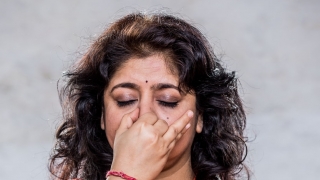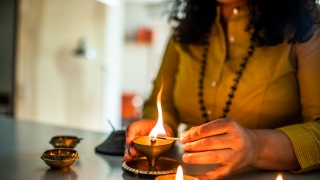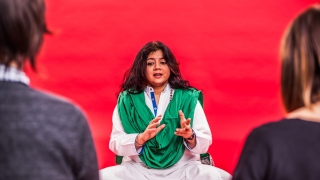Surya Namaskar. Sun Salutation. There’s a magic around this set of movements that far transcends the asana. In this sacred ritual, we invoke illumination as we move through 12 positions carefully poised at 6 different angles where we may be imbued with the solar energy of the morning sun. A deft mix of contractions, backbends, forward folds, and stretching, surya namaskar is a celebration of the spine. But that’s not all. Surya Namaskar is also a practice of worship devoted to our pranic energy.
Prana sustains us. Where prana is stagnant, we begin to see symptoms on the physical, mental, or emotional level. Enter marmani. Marmani, or marma points, are the bridge between the physical and subtle bodies.
The points, which connect to the chakras, or energy centers of the body, act as portals into the subtle body through which we can affect the physical, mental, and emotional body by bringing prana to stagnant places and allowing ama (toxins), to dissolve.
These marma points act like“mini minds,”where prana flows through a system of 72,000 nadis, or energetic pathways, to the organs of the body, balancing prana, tejas, and ojas and stimulating the healing energy of the body.
Life brings imbalance and unpredictability. Fortunately, our 108 marmani across the body can signal us that they need a little attention. Tenderness at a marma point alerts us that there is deficiency, weakness, or ama that needs to be released. The nature of the tenderness can reveal even more about how we can best address the imbalance using Ayurvedic therapies. The application of pressure (along with other marma chikitsa, or therapies) can help release toxins, restore better function, and rejuvenate a person at the cellular level.
As we move from one pose to the next in surya namaskar, the complementary movements of the asanas pump prana through the nadis, sending a ping of healing energy to various dhatus, (tissues) of the body. On the physical level, the movements help awaken the “sun” within the body—the metabolism—through the intelligence of the marmani as they calibrate the flow of prana to the mind and body.
Surya namaskar serves as a therapeutic marma self-massage as it stimulates key marma points throughout the body. Touching on 10 main marma points and 3 minor marma points, surya namaskar activates the flow of energy and begins the process of self-healing across many major bodily systems and tissues.
Marma also means “secret,” or “that which allows a shift.” These secret portals invite the practitioner to calibrate the body’s energy flow through touch, sound, mudra, and other chikitsa to aid the body in achieving a more optimal state of functioning through these “eyes of the chakras.”
As you begin to contemplate the function (or existence, if this is new to you) of these points, just imagine the implications of the movements of the body. As an example, take talahridaya, marma points located in the center of each palm and the sole of each foot. These important points adjust the flow of prana in the navel and heart as they deal with energy circulation of the whole body, the respiratory system (pranavaha srotas), circulation and heat on the skin (bhrajaka pitta), lubrication of the heart and lungs (avalambaka kapha), among many other important functions.
Each time these points are stimulated, a surge of prana flows through the body, invigorating the body’s cells and systems. With every downward-facing dog, we celebrate the lungs and heart as the prana pours through our system. And remember, there are still 104 other points on the body to explore!
Marma points still invoke an air of mystery, or perhaps awe, as we discover just how great a role they play in the body and how we can work with them to bring about our best health. As always, the body is a gift. It’s up to you to understand how to use it. (Want to know more? Check out the Yoga book)
STAY IN TOUCH
Start your FREE subscription to Indu Arora's newsletter to get more on Yoga and Ayurveda here
Say hello on Instagram
Subscribe to my Youtube Channel.



